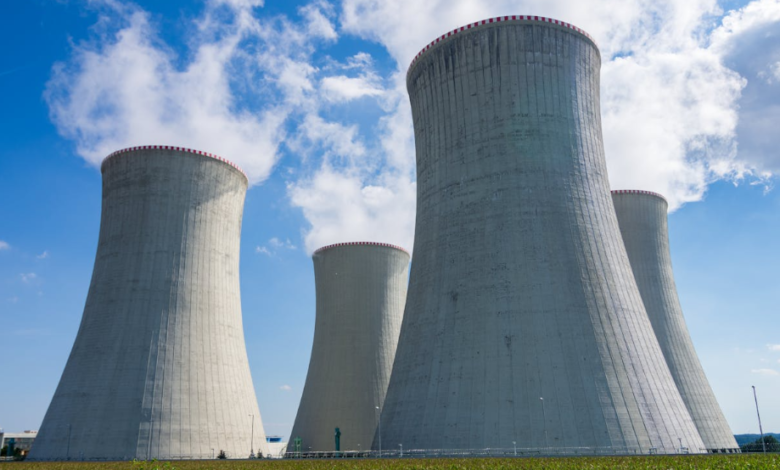Steam Turbine Diaphragms: Function, Challenges, and Repair for Long-Term Reliability

Steam turbines are integral to global power generation, converting the thermal energy of pressurized steam into mechanical energy that drives electrical generators. Among the many precision-engineered components that make up a steam turbine diaphragms play a crucial role in directing steam flow, maintaining efficiency, and ensuring stable operation.
Though often overlooked compared to blades or rotors, diaphragms are vital to turbine performance. They operate under high pressures and temperatures, endure significant stress, and are prone to wear over time. Understanding their function, challenges, and maintenance requirements is key to extending the lifespan of turbines and improving their reliability.
This article examines steam turbine diaphragms in depth, highlighting their purpose, the issues they face, repair and refurbishment practices, and technological advancements that continue to shape their future.
What Are Steam Turbine Diaphragms?
Steam turbine diaphragms are stationary components located between rows of rotating blades. They consist of two main parts:
- Outer and Inner Rings: These hold the diaphragm structure and form a pressure boundary.
- Nozzle Vanes (or Guide Blades): Positioned between the rings, these direct the steam flow at the correct angle onto the rotating blades.
Essentially, diaphragms serve as nozzles that accelerate and control steam flow. By shaping steam into precise jets, they optimize how the steam strikes the turbine blades, maximizing energy transfer.
Key Functions of Steam Turbine Diaphragms
- Steam Direction: Guide the steam onto rotor blades at the optimum angle.
- Pressure Control: Reduce pressure in stages to improve efficiency.
- Sealing: Include labyrinth seals to minimize steam leakage between high- and low-pressure zones.
- Structural Support: Maintain alignment of nozzle vanes under mechanical and thermal loads.
Without properly functioning diaphragms, steam turbines suffer reduced efficiency, higher operating costs, and increased risk of damage to downstream components.
Types of Steam Turbine Diaphragms
Diaphragms are designed differently depending on turbine type, steam conditions, and performance requirements:
- Single-Shell Diaphragms
- Constructed as a single assembly.
- Common in smaller turbines.
- Easier to manufacture but harder to repair.
- Constructed as a single assembly.
- Split or Two-Piece Diaphragms
- Divided into upper and lower halves.
- Easier to install and remove during maintenance.
- Used widely in large utility turbines.
- Divided into upper and lower halves.
- Welded Diaphragms
- Made from welded nozzle segments.
- Allow for complex geometries and high-performance steam paths.
- Made from welded nozzle segments.
- Segmented Diaphragms
- Built from multiple segments joined together.
- Simplifies manufacturing and replacement of damaged sections.
- Built from multiple segments joined together.
See also: Understanding the Role of sssdp in Modern Education
Challenges Faced by Diaphragms in Operation
Steam turbine diaphragms are subjected to severe operational conditions that cause wear and degradation over time:
1. Erosion
High-velocity steam carrying water droplets or solid particles erodes nozzle vanes, leading to loss of aerodynamic efficiency.
2. Corrosion
Moisture and impurities in steam cause pitting and general corrosion, particularly in low-pressure turbine stages.
3. Thermal Stress and Fatigue
Repeated heating and cooling cycles generate cracks in nozzle vanes and rings.
4. Seal Wear
Labyrinth seals in diaphragms degrade due to friction, causing steam leakage and efficiency loss.
5. Distortion and Misalignment
High temperatures and pressures can warp or misalign diaphragm assemblies, affecting steam flow and rotor dynamics.
If left unchecked, these issues lead to increased heat rate, reduced power output, and in extreme cases, costly turbine shutdowns.
The Importance of Diaphragm Repair and Refurbishment
Replacing diaphragms entirely is expensive and time-consuming. Repair and refurbishment provide a cost-effective solution to restore functionality and extend diaphragm life.
- Cost Efficiency: Repairs are typically far less expensive than manufacturing new diaphragms.
- Performance Recovery: Restored nozzles and seals improve turbine efficiency.
- Downtime Reduction: Refurbishment reduces outage duration compared to complete replacement.
- Sustainability: Extends material life and reduces industrial waste.
- Protection of Other Components: Properly repaired diaphragms prevent abnormal wear on turbine blades and rotors.
For power plants aiming to optimize availability and minimize operating expenses, diaphragm repair is a key strategy.
Diaphragm Repair and Refurbishment Techniques
Repairing diaphragms is a specialized process involving precision machining, metallurgy, and advanced welding. Common steps include:
1. Inspection and Assessment
- Visual inspection, ultrasonic testing, and dye penetrant testing identify cracks, wear, or distortion.
- Dimensional checks determine misalignment or material loss.
2. Cleaning
- Deposits, corrosion, and oxides are removed using grit blasting or chemical cleaning.
3. Crack Repair
- Precision welding techniques such as TIG or laser welding restore cracked areas.
- Heat treatment may be applied to relieve stresses and restore material strength.
4. Seal Restoration
- Worn labyrinth seals are rebuilt using welding, cladding, or replacement inserts.
- Precision machining restores correct seal clearances.
5. Vane Repair and Replacement
- Eroded or damaged nozzle vanes are rebuilt using weld overlay techniques.
- In severe cases, vanes are cut out and replaced with new inserts.
6. Coating Application
- Thermal barrier and erosion-resistant coatings are applied to improve durability.
- Specialized coatings resist corrosion in wet steam environments.
7. Dimensional Restoration
- Machining ensures diaphragms meet OEM specifications for alignment and tolerances.
8. Final Testing and Quality Assurance
- Pressure and flow tests validate aerodynamic performance.
- Non-destructive evaluation ensures structural integrity before reinstallation.
Applications in Power Generation
Steam turbine diaphragms are especially critical in large utility-scale power plants, where efficiency gains or losses significantly affect economics.
- Improved Efficiency: Restored diaphragms reduce heat rate, lowering fuel consumption.
- Reduced Outage Costs: Repairs shorten maintenance intervals, maximizing uptime.
- Extended Turbine Life: Prevents cascading damage to rotors and blades.
- Environmental Benefits: Efficient turbines reduce CO₂ emissions per unit of power.
For power producers, maintaining diaphragm integrity directly correlates with profitability and environmental compliance.
Technological Advancements in Diaphragm Repair
Recent innovations are enhancing the quality and efficiency of diaphragm repairs:
- Additive Manufacturing (3D Printing): Used to fabricate or restore nozzle segments with complex geometries.
- Laser Cladding: Provides highly precise, durable repair for worn seals and vanes.
- Advanced Coatings: Nanostructured coatings extend resistance to erosion and corrosion.
- Digital Simulation and CFD: Computational Fluid Dynamics models optimize repaired nozzle profiles for improved performance.
- Robotics and Automation: Automated welding and machining improve consistency and reduce human error.
These technologies are making diaphragm repairs more cost-effective, accurate, and sustainable.
The Future of Steam Turbine Diaphragms
As the power generation industry shifts toward efficiency and sustainability, steam turbine diaphragm design and repair practices will evolve:
- Integration with Predictive Maintenance: Sensors and AI will predict diaphragm wear before failures occur.
- Greener Materials and Processes: Eco-friendly coatings and repair technologies will minimize environmental impact.
- Longer Life-Cycle Designs: OEMs and repair shops are developing diaphragms with enhanced durability for extended service intervals.
- Hybrid Solutions: Combining new and refurbished diaphragm segments to balance cost and performance.
With turbines expected to remain essential for base-load and backup power, diaphragms will continue to be central to long-term turbine reliability.
Conclusion
Steam turbine diaphragms may not attract as much attention as blades or rotors, but they are indispensable for controlling steam flow, improving efficiency, and maintaining turbine stability. Operating under extreme thermal and mechanical stresses, diaphragms inevitably degrade, leading to erosion, corrosion, and seal wear.
Through advanced repair methodologies—inspection, welding, coating, and machining—diaphragms can be restored to near-original condition, extending turbine life while reducing costs and downtime. In power generation, diaphragm repair directly translates into efficiency gains, emission reductions, and improved profitability.





